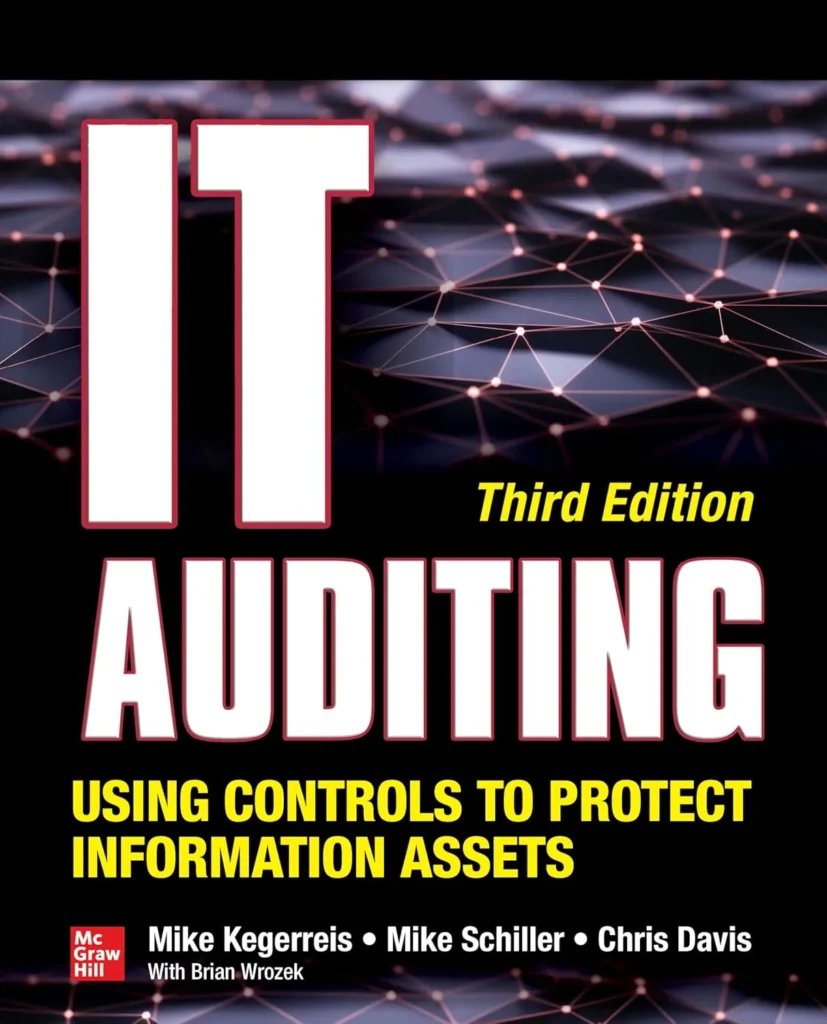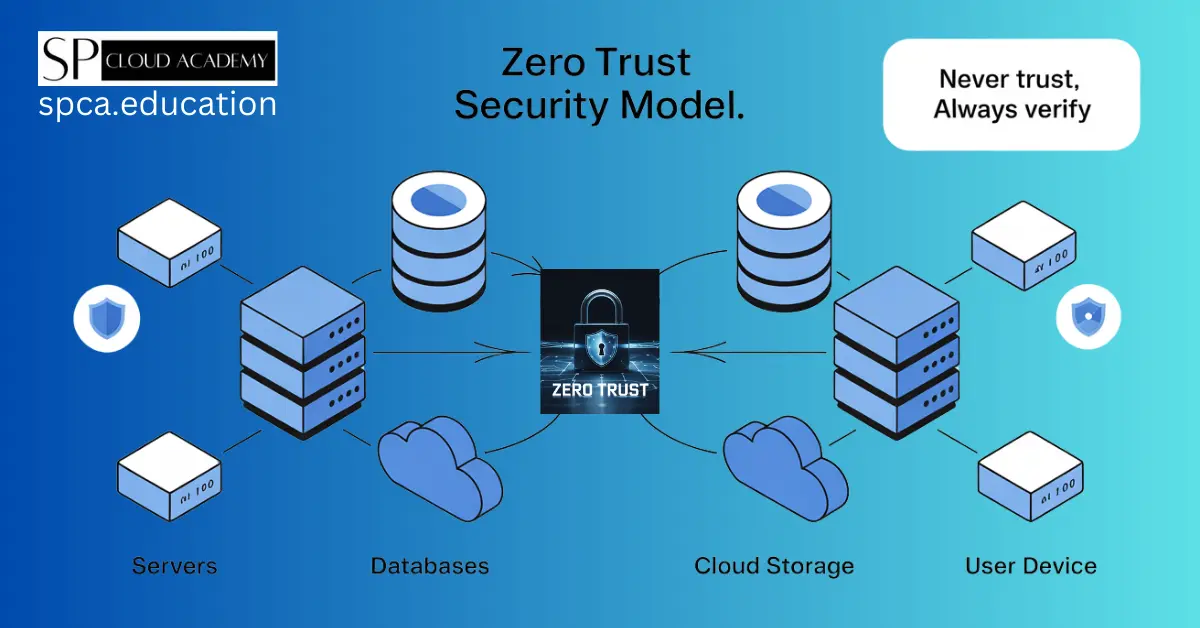In today’s hyper-connected digital realm, the risks associated with cyber threats are not only escalating—they are evolving continuously. For businesses of all sizes, ensuring that your IT infrastructure is secure, resilient, and compliant with the latest regulations is not optional but essential to survival. Whether you choose to partner with specialist security firms or build an internal security team, IT security auditing is the foundation that will help you identify vulnerabilities, prevent data breaches, and protect your company’s reputation.
This guide covers every critical aspect of IT security auditing—from what it is and why it matters to the detailed processes, best practices, and future trends that will shape the landscape in the years ahead. By understanding and implementing these concepts, you will build a powerful cybersecurity posture that not only thwarts cyber attackers but also fulfills compliance needs and bolsters stakeholder trust.
Introduction
In recent years, high-profile cyber-attacks, data breaches, and ransomware incidents have underscored the pressing need for businesses to prioritize cybersecurity. As enterprises expand their digital footprint through cloud services, mobile integrations, and IoT deployments, the complexity of managing and securing IT systems increases exponentially.
IT security auditing serves as a cornerstone in this battle against cyber threats. It is a systematic evaluation of your IT systems, policies, and controls to ensure that they align with security best practices, regulatory mandates, and the ever-changing threat landscape. By examining hardware, software, user practices, and network vulnerabilities, an audit provides a clear picture of where your business stands and what actions must be taken to fortify it.
This guide aims to demystify IT security auditing. We explore essential concepts in plain language, provide practical step-by-step instructions, and discuss both traditional and emerging trends in cybersecurity. Whether you’re a seasoned IT professional, a business owner, or someone responsible for compliance, this guide will help you understand how to implement and leverage effective IT security audits to protect your organization.
Understanding IT Security Auditing
What Is IT Security Auditing?
At its core, IT security auditing is a comprehensive examination and evaluation of an organization’s information systems, security policies, and control mechanisms. It involves methodical testing, review, and analysis to ensure the confidentiality, integrity, and availability of data. The goal is to identify weaknesses—whether they be technological vulnerabilities, misconfigurations, or gaps in policy implementation—and to recommend corrective measures.
A robust IT security audit will assess both technical components, such as firewalls, access controls, and encryption methods, as well as administrative controls, including policies, procedures, and employee awareness training. This dual approach guarantees that both the technology and the human element of cybersecurity are addressed, thereby reducing overall risk and the chance of an incident.
Types of IT Security Audits
There are several types of IT security audits, each designed to address different needs and compliance requirements:
- Internal Audits: Conducted by in-house teams to continuously monitor and ensure that the internal security posture is robust. These audits often focus on adherence to established policies and best practices.
- External Audits: Carried out by third-party experts to provide an independent review of an organization’s IT security posture. This type is critical for unbiased assessments that may be required by regulatory bodies.
- Compliance Audits: These audits ensure that an organization meets specific regulatory and industry standards such as ISO 27001, PCI-DSS, HIPAA, and GDPR.
- Risk-Based Audits: Focused on identifying the most significant risks and vulnerabilities in your IT environment and prioritizing remediation based on the severity of those risks.
- Penetration Testing: Although slightly different from a typical audit, penetration testing simulates real-world cyber-attacks to identify potential exploitation paths.
By tailoring your IT security audit strategy to your organization’s unique needs, you can build a comprehensive framework that effectively addresses both current and emerging threats.
The Importance of IT Security Auditing in Today’s Business Environment
Protecting Your Digital Assets
In an era where data is the most valuable asset, losing sensitive information can lead to catastrophic financial and reputational damage. Cybercriminals are continually evolving their techniques to exploit vulnerabilities in business networks. Thus, identifying and addressing these vulnerabilities through regular IT security auditing is paramount to safeguarding your data. The insights gained from audits help you understand where your defenses are strong and where they need reinforcement.
Ensuring Regulatory Compliance
Many industries are subject to strict regulatory requirements designed to protect confidential information and ensure data privacy. IT security audits help organizations comply with regulations such as GDPR, PCI-DSS, HIPAA, and ISO 27001. Failure to comply with these standards can result in severe fines and legal consequences. By proactively auditing your IT systems, you not only protect your enterprise but also demonstrate a commitment to data protection that can build trust with customers, partners, and regulatory bodies.
Enhancing Operational Resilience
IT security auditing is not just about identifying problems—it is also about building long-term resilience in your operations. By continuously testing your IT environment, you can detect potential issues early and implement measures to mitigate risks before they escalate into major incidents. This proactive approach ensures that your business maintains continuity, minimizes downtime, and preserves customer trust, even in the face of evolving threats.
Building a Culture of Security
Regular IT security audits play a crucial role in fostering an organizational culture centered on security. When employees know that their systems and practices are routinely examined, they are more likely to take cybersecurity seriously. This heightened awareness can reduce risky behavior, encourage adherence to policies, and ultimately lower the overall risk profile of your organization.
Preparing for an IT Security Audit
Preparing for an IT security audit is a multi-step process that lays the groundwork for a successful assessment. A well-prepared organization can not only streamline the audit process but also enhance the overall effectiveness of the findings.
Define the Audit Scope and Objectives
The first step is to clearly define what you want to achieve with the audit. Are you focused on ensuring regulatory compliance, evaluating the effectiveness of your current security measures, or identifying the root cause of frequent security incidents? Setting clear objectives and defining the audit’s scope will help you prioritize efforts and allocate resources effectively.
Assemble a Cross-Functional Audit Team
IT security auditing is a team effort that requires the collaboration of IT professionals, risk managers, compliance officers, and even representatives from business departments. This interdisciplinary approach ensures that all aspects of the IT environment are covered, from technical infrastructures such as firewalls and servers to business processes and employee conduct. If using an external auditor, ensure that their expertise aligns perfectly with your industry requirements.
Gather Documentation and Resources
An effective audit requires an inventory of all hardware, software, network diagrams, access control lists, security policies, and incident response plans. Documenting your current IT infrastructure, security protocols, and past audit reports provides context and facilitates a smoother audit process. It is also important to have a clear understanding of any regulatory or compliance standards relevant to your business.
Conduct a Preliminary Risk Assessment
Before the formal audit begins, conduct a preliminary risk assessment to pinpoint known vulnerabilities and areas of concern. This initial review can involve vulnerability scanning, risk ranking, and dropdown surveys. The outcomes will not only guide the auditors’ focus but can also serve as baseline metrics for tracking improvements in your security posture.
Develop an Audit Roadmap
Once the scope, objectives, team, and preliminary assessment are in place, develop an audit roadmap. This roadmap should include timelines, checkpoints, deliverables, and detailed procedures for conducting the audit. Clear documentation of the roadmap also helps in managing expectations and communicating audit plans to key stakeholders.
The IT Security Audit Process: A Step-by-Step Guide
A structured IT security audit process ensures that no stone is left unturned in evaluating your organization’s cybersecurity posture. Here’s a detailed, step-by-step guide to carrying out a full-scale IT security audit.
Step 1: Planning and Scoping
- Identify Objectives: Clearly define the audit objectives, including compliance, operational efficacy, and risk management goals.
- Determine Scope: Decide what parts of your IT environment will be audited. This may include networks, databases, applications, and mobile systems.
- Create an Audit Team: Assign roles and responsibilities. Use a mix of internal experts and, if needed, external specialists.
- Develop a Project Plan: Outline timelines, resources required, and expected deliverables.
Step 2: Gathering and Reviewing Documentation
- Collect Policies and Procedures: Ensure all security policies, incident response plans, and compliance documents are up-to-date and accessible.
- Inventory IT Assets: Maintain a current listing of devices, software applications, and network components.
- Review Past Audits: Learn from previous audits and ensure actionable items have been addressed.
This phase sets the foundation for a successful audit by providing a comprehensive view of your IT landscape and existing security controls.
Step 3: Conducting the Technical Assessment
- Vulnerability Scanning: Use automated tools to identify vulnerabilities in your network, systems, and applications. Common tools include Nessus, OpenVAS, and Nmap.
- Penetration Testing: Perform controlled penetration tests to simulate real-world attacks and uncover potential entry points.
- Configuration Review: Examine system and network configurations to ensure they comply with security best practices.
- Log Analysis: Assess system and application logs for signs of unauthorized activity or anomalies.
By utilizing a combination of automated and manual techniques, you can obtain a thorough understanding of your vulnerabilities and prioritize them accordingly.
Step 4: Evaluating Compliance and Policy Adherence
- Regulatory Standards: Check if your IT systems align with industry-specific frameworks such as ISO 27001, PCI-DSS, HIPAA, or GDPR.
- Internal Policies: Verify that internal security policies are properly implemented and adhered to by all employees.
This step ensures that your organization is not only technically secure but also compliant with both internal and external regulations.
Step 5: Risk Assessment and Prioritization
- Analyze Findings: Evaluate the vulnerabilities based on potential business impact and likelihood of exploitation.
- Prioritize Risks: Develop a risk matrix that categorizes issues by severity, allowing you to focus on the most critical gaps first.
- Develop Remediation Plans: Work collaboratively with IT teams to define action plans for mitigating identified risks.
This comprehensive risk evaluation empowers your organization to tackle vulnerabilities systematically, ensuring that high-priority issues are addressed immediately.
Step 6: Reporting and Recommendations
- Draft the Audit Report: Create a detailed report that outlines findings, assesses risks, and offers actionable recommendations.
- Executive Summary: Include an executive summary that translates technical details into business implications for senior management.
- Review and Feedback: Collaborate with stakeholders to refine and finalize recommendations.
Transparency and clarity in reporting ensure that decision-makers understand the risks and are motivated to authorize remediation measures.
Step 7: Follow-Up and Continuous Improvement
- Implement Recommendations: Execute the remediation plans and monitor progress.
- Re-Audit and Continuous Monitoring: Regularly schedule follow-up audits to gauge improvements and address any new vulnerabilities.
By instituting a cycle of regular audits and reviews, IT security auditing becomes an ongoing process that continually enhances the security posture of your business.
Key Areas of IT Security Auditing
To achieve a robust cybersecurity posture, an IT security audit must cover a range of technical and administrative areas. The following key areas represent the core pillars of a comprehensive audit:
1. Network Security
- Firewall Configurations: Verify that firewall settings are optimized to filter out unauthorized traffic while supporting legitimate operations.
- Intrusion Detection/Prevention Systems (IDS/IPS): Evaluate the effectiveness of your IDS/IPS solutions in detecting and mitigating network intrusions.
- Network Segmentation: Ensure that sensitive data is confined to secure segments of the network, limiting lateral movement in the event of a breach.
A meticulous focus on network security lays the groundwork for a resilient digital perimeter that deters external attacks.
2. Access Controls and Authentication
- User Authentication: Analyze the effectiveness of multi-factor authentication (MFA) protocols.
- Identity and Access Management (IAM): Review user privileges to minimize the risk of unauthorized access and excessive permissions.
- Remote Access Policies: Check that remote access solutions (VPNs, secure remote desktop protocols) are properly configured and monitored.
Controlled, well-managed access systems are essential for preventing unauthorized intrusion and data breaches.
3. Data Protection and Encryption
- Data-at-Rest and Data-in-Transit: Evaluate encryption protocols to ensure data remains secure both when stored and while being transmitted.
- Backup and Recovery: Verify that data backup procedures are robust and regularly tested to guarantee business continuity in case of an incident.
Strong data protection measures lend confidence to your overall security strategy, securing the lifeblood of your business information.
4. Application and Software Security
- Secure Development Practices: Review the development lifecycle to confirm that security is integrated into software design.
- Vulnerability Management: Assess the effectiveness of patch management and regular software updates.
- Third-Party Integrations: Evaluate the security of vendor-provided services and software to mitigate risks associated with supply-chain vulnerabilities.
A focus on application security ensures that the software driving your business is as robust and resilient against cyber threats as your network infrastructure.
5. Physical Security and Environmental Controls
- Data Center Security: Verify that physical access to servers and data centers is restricted and monitored.
- Environmental Monitoring: Check whether systems are in place to detect and respond to environmental hazards such as temperature fluctuations or power outages.
Even the most secure digital systems can be compromised if physical security is overlooked.
Tools and Techniques for Effective IT Security Auditing
With the increasing complexity of IT ecosystems, employing the right tools and techniques is critical to ensure that your security audits are both thorough and efficient. Here are some of the most widely used tools and methodologies in IT security auditing:
Popular IT Audit Tools
| Tool | Purpose | Key Features |
| Nessus | Vulnerability Scanning | Comprehensive vulnerability assessments, reporting |
| Nmap | Network Discovery and Security Auditing | Port scanning, host discovery, and service detection |
| Wireshark | Network Protocol Analyzer | Deep packet inspection, real-time monitoring |
| OpenVAS | Open Source Vulnerability Assessment | Broad vulnerability database and scanning capabilities |
| Metasploit | Penetration Testing Framework | Exploit frameworks, vulnerability validation |
Techniques and Methodologies
- Risk-Based Vulnerability Assessment: Focuses on identifying and prioritizing threats based on their potential to harm your organization. This approach enables you to allocate resources appropriately and efficiently.
- Penetration Testing: Simulates real-world attacks to evaluate the security of your systems. This method often reveals not only system vulnerabilities but also weaknesses in human behavior, such as poor password practices.
- Configuration and Change Management Audits: These audits scrutinize the modifications made to systems and ensure that they follow pre-defined security policies. Regularly reviewing configurations helps avoid misconfigurations that can lead to breaches.
- Log and Event Analysis: Automated systems that monitor logs across various devices can detect anomalies indicative of unauthorized access or other security incidents.
- Compliance Checklists: Using checklists based on regulatory frameworks (e.g., PCI-DSS, HIPAA, GDPR) ensures that your IT security practices meet legal and industry standards.
By leveraging these tools and techniques, you can develop a multifaceted auditing strategy that leaves no vulnerabilities unaddressed.
Best Practices to Enhance Your IT Security Posture
Perfecting your IT security posture is an ongoing process that goes hand in hand with regular auditing. Here are some best practices to consider:
1. Develop a Strong Security Policy
- Write Clear Guidelines: Your security policy should clearly define acceptable and unacceptable behavior, access protocols, and incident response procedures.
- Communicate Regularly: Ensure that all employees understand and adhere to the security policies through regular training sessions and updates.
- Review and Update: Policies should be reviewed at least annually to remain relevant with the emerging threat landscape.
2. Invest in Continuous Training
- Employee Awareness: Conduct regular cybersecurity training sessions to keep employees informed. Human error is a common entry point for cyberattacks.
- Specialized Training: Provide advanced training for IT personnel on the latest security tools and trends.
- Simulated Phishing Attacks: Regular drills can help employees recognize and avoid real phishing attempts.
3. Leverage Automation and AI
- Automated Scanning Tools: Use automated vulnerability scanners to ensure continuous monitoring.
- Behavior Analytics: AI-driven analytics can detect anomalous behavior patterns, which might indicate unauthorized activity.
- Real-Time Reporting: Integrate systems that provide real-time alerts and dashboards for swift action on emerging threats.
4. Implement a Multi-Layered Security Approach
A multi-layered approach helps to ensure that if one security measure fails, others stand in its place. This approach includes:
- Perimeter Defense: Firewalls, IDS/IPS, and secure gateways.
- Endpoint Security: Anti-virus, anti-malware, and endpoint detection response solutions.
- Data Encryption: Encrypt critical data both at rest and in transit.
- Backup and Recovery: Ensure robust backup solutions in place to recover swiftly if a breach occurs.
5. Regularly Test Your Incident Response Plan
- Drills and Simulations: Regularly simulate breaches to test the efficiency of your incident response.
- Collaborative Reviews: Involve cross-functional teams to analyze response efficacy and improve upon it.
- Update Procedures: Continuously refine your response strategies based on lessons learned from drills and real incidents.
Common Challenges in IT Security Auditing and How to Overcome Them
While a robust IT security audit can significantly enhance your security posture, several challenges can arise during the process. Here are some common obstacles and strategies to overcome them:
1. Rapidly Evolving Threat Landscape
Challenge: Cyber threats evolve almost daily. New vulnerabilities, zero-day exploits, and advanced persistent threats emerge with increasing sophistication.
Solution:
- Adopt a dynamic auditing strategy that includes continuous monitoring and regular updates to vulnerability databases.
- Leverage threat intelligence feeds to receive real-time data on emerging risks.
- Embrace automation and AI tools that can swiftly adapt to new attack patterns.
2. Limited Resources and Budget Constraints
Challenge: Small to medium-sized enterprises often have limited resources, which can hamper the frequency and thoroughness of audits.
Solution:
- Prioritize high-risk areas by conducting risk-based audits that focus on the most critical vulnerabilities.
- Outsource parts of the audit to third-party specialists when in-house expertise is lacking.
- Consider cloud-based security solutions that offer rapid scalability at a lower cost.
3. Internal Resistance and Lack of Security Culture
Challenge: Employees and even management may not fully appreciate the importance of rigorous IT security auditing, leading to resistance or non-compliance.
Solution:
- Invest in training programs that emphasize the business impact of cyber threats.
- Communicate audit findings in business terms, outlining how vulnerabilities translate to risks for the enterprise.
- Create incentive programs that reward adherence to security practices.
4. Complex IT Environments and Legacy Systems
Challenge: Modern IT infrastructures are often a mix of legacy systems and new technologies, complicating the auditing process.
Solution:
- Map your IT environment comprehensively to understand the integration points between legacy and modern systems.
- Establish a phased upgrading plan, starting with high-risk legacy systems.
- Use specialized tools designed to audit legacy systems that might lack modern security features.
Case Studies and Real-World Examples
Understanding the practical applications of IT security auditing can provide valuable insight into how theoretical principles are implemented in real business scenarios. Below are a few case studies that illustrate successful audit implementations and tangible outcomes.
Case Study 1: A Financial Institution’s Journey to Compliance
A mid-sized bank faced increasing scrutiny from regulators following minor data breaches. The institution decided to conduct a comprehensive IT security audit focusing on its network security and data encryption measures. Key steps included:
- Pre-Audit Preparation: The bank reviewed its IT policies, conducted internal training sessions, and established a cross-functional audit team.
- Audit Execution: Third-party experts were brought in to perform penetration testing, vulnerability scanning, and compliance checks in accordance with PCI-DSS standards.
- Outcomes: The audit uncovered several misconfigurations in firewall rules and gaps in remote access protocols. After remediation, the bank not only achieved compliance but also significantly reduced its risk exposure by 60% within a few months.
Case Study 2: A Retail Chain’s Enhanced Cyber Resilience
A national retail chain, integrating both physical and online operations, recognized the increasing risk of cyber-attacks targeting its point-of-sale systems and e-commerce platforms. To address these vulnerabilities:
- Risk-Based Auditing: The chain adopted a risk-based approach, prioritizing systems handling sensitive customer data for detailed scrutiny.
- Implementation of Continuous Monitoring: Automated tools were introduced to continuously monitor for unusual access patterns and real-time threat intelligence.
- Impact: Within six months, the retail chain successfully thwarted multiple attempted cyber intrusions. The implemented measures not only improved their security posture but also enhanced customer trust, reflected by increased online transactions and positive brand reputation.
Case Study 3: A Global Manufacturing Corporation
A global manufacturing firm with a sprawling network of factories and office locations embarked on an IT security audit to unify its cybersecurity practices across diverse geographical regions:
- Global Audit Strategy: The company developed standardized procedures that ensured consistency in security policies and practices, irrespective of location.
- Cross-Border Data Protection: Special attention was paid to compliance with international data protection laws such as GDPR alongside local regulations.
- Lessons Learned: Besides improving its vulnerability management system, the audit led to the adoption of a centralized IT security dashboard for real-time monitoring, greatly enhancing overall operational resilience.

A comprehensive guide on IT auditing and controls, essential for cybersecurity pros and risk managers. Offers practical frameworks, real-world examples, and clear explanations to safeguard assets. Well-structured, bridging theory and application. Pricey but a must-have for enhancing audits and data protection. Highly recommended. #CyberSecurity #ITAudit #RiskManagement #Compliance #Infosec
Future Trends in IT Security Auditing
As technology evolves, so do the tools, techniques, and challenges associated with IT security auditing. Keeping abreast of these trends is essential for maintaining a proactive defense strategy.
1. Automation and Artificial Intelligence
AI and machine learning are revolutionizing the landscape of IT security auditing. Automated vulnerability scanners, intelligent threat detection systems, and AI-enabled compliance tools are making it easier to identify, assess, and remediate risks in real time. In addition, these technologies can help predict potential threats by analyzing historical data and identifying anomalies faster than human auditors.
2. Continuous Monitoring and Real-Time Analytics
The traditional approach of periodic audits is being augmented with real-time monitoring solutions. Continuous monitoring systems provide ongoing assessments that can detect threats immediately, reducing the window of opportunity for attackers. By integrating IT security audits with real-time performance analytics, organizations can ensure that remedial measures are deployed at the moment vulnerabilities are discovered.
3. Cloud Security and Virtual Environments
With the accelerated shift of infrastructure to cloud platforms and virtualized environments, new auditing challenges emerge. Cloud security auditing must now address shared responsibility models, dynamic resource scaling, and multi-tenant environments. Future trends indicate a rise in specialized auditing frameworks and tools that cater to these unique aspects of cloud security.
4. Integration of Blockchain Technology
Blockchain is making inroads into IT security auditing by providing a tamper-proof mechanism for recording audit logs and transaction histories. This technology not only enhances transparency but also ensures that the audit trail remains unaltered, thus solidifying the credibility of the audit process.
5. Regulatory and Legal Developments
As governments and international bodies introduce new regulations to combat cybercrime, IT security audits will increasingly focus on ensuring regulatory compliance. Future audits will likely incorporate global compliance checklists that account for cross-border data protection, privacy laws, and industry-specific mandates.
Conclusion: Taking Action to Safeguard Your Business
The journey toward robust cybersecurity is continuous and evolving. IT security auditing is not just a checkbox activity; it is an essential investment in the future and resilience of your business. From identifying vulnerabilities to ensuring compliance and fostering a security-centric culture, a well-executed audit provides the roadmap you need to secure your critical assets and maintain trust among your customers, partners, and stakeholders.
Key Takeaways
- Know Your Threats: Regular IT security audits help you stay ahead of cybercriminals by identifying vulnerabilities before they can be exploited.
- Stay Compliant: Adhering to international and industry-specific regulations protects your business from legal risks and enhances your reputation.
- Embrace Continuous Improvement: Cyber threats are ever-evolving, meaning your cybersecurity strategies must evolve too. Continuous monitoring, regular audits, and updated training are essential.
- Invest in the Right Tools and Talent: A robust security posture is built on both advanced technological solutions and a well-educated workforce. Focus on training, automation, and leveraging expert external consultants when necessary.
By following the guidelines discussed in this comprehensive guide and integrating them into your IT security strategy, you lay the foundation for a resilient, adaptive, and forward-thinking cybersecurity posture. Whether you are just beginning to explore IT security auditing or looking to refine your current process, the techniques and best practices outlined here will help you protect your business from the relentless tide of cyber threats.
See Also
-

Unmasking Fake Photos: How Metadata Analysis and Reverse Search Reveal the Truth
-

The Secret Weapons of Smart Self-Defense in the Age of Cyberbullying
-

Secure Smarter: The Best Android Password Apps to Trust in 2025
-

Unlocking Safety: The Ultimate Mobile Device Security Policy Your Team Needs Now
-

Is Your Cloud Data Safe? The Must-Have Storage Policy Every Business Needs
-

Browse Like a Ghost: The Ultimate Guide to Private Surfing on All Your Devices with a VPN
-

Mastering Penetration Testing: A Complete Guide for Beginners and Professionals
-

IT Security Auditing: The Ultimate Guide to Protecting Your Business from Cyber Threats
-

Zero Trust Explained: Breaking Down the Basics of Modern Cybersecurity